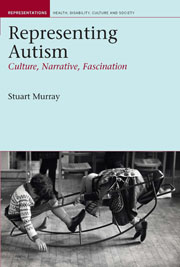Book contents
- Frontmatter
- Contents
- List of figures
- Permissions
- Preface: questions
- Introduction: autism and narrative
- 1 Presences: autistic difference
- 2 Idiots and savants
- 3 Witnessing
- 4 Boys and girls, men and women
- 5 In our time: families and sentiments
- Conclusion: causing/curing/caring
- Acknowledgements
- Select bibliography
- Index
Conclusion: causing/curing/caring
- Frontmatter
- Contents
- List of figures
- Permissions
- Preface: questions
- Introduction: autism and narrative
- 1 Presences: autistic difference
- 2 Idiots and savants
- 3 Witnessing
- 4 Boys and girls, men and women
- 5 In our time: families and sentiments
- Conclusion: causing/curing/caring
- Acknowledgements
- Select bibliography
- Index
Summary
In An Anthropologist on Mars, Oliver Sacks writes ‘Autism, clearly, is a condition that has always existed’. His comment is the product of a life spent as a neurologist caring for those who are cognitively different, and his relationship with autism has led him to investigate the historical record in a search for cases that, as a clinician, he might recognize. But we can use his observation in order to face another direction. Just as autism has always existed, so it will always exist. It is here, as part of the grand patterning of humanity, and will continue to be so for as long as there is variation in the condition of being human. If thinking about autism takes certain forms at the moment, it is likely that these will not last, and other, as yet unimaginable, ideas about the condition will circulate in the future. This book has attempted to look at how autism is being framed and discussed across a wide range of narratives, most of them contemporary, and has sought to explain the ways in which it operates as a curious fascination of the present. The stories and events about autism that increasingly unfold all around us are markers of a particular desire to engage with human difference, but it is probable that, as it always has done, this desire will change over time.
- Type
- Chapter
- Information
- Representing AutismCulture, Narrative, Fascination, pp. 207 - 213Publisher: Liverpool University PressPrint publication year: 2008



